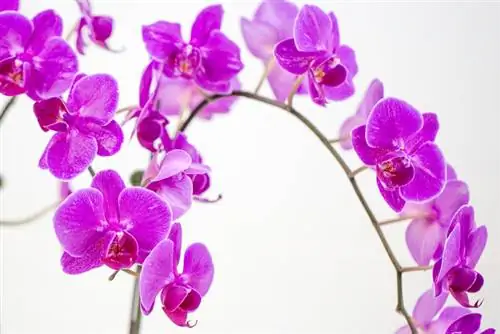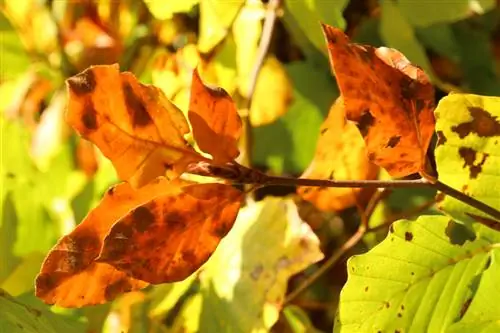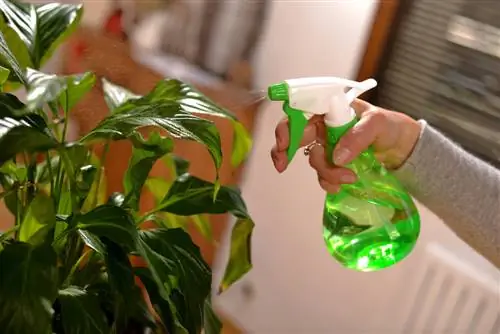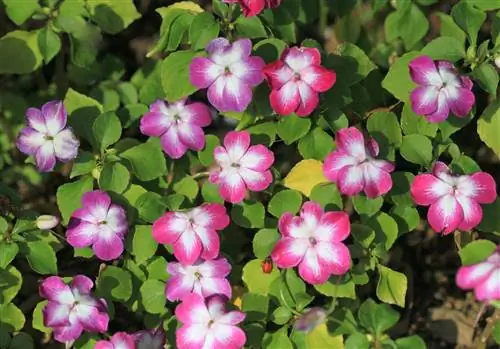- Author admin [email protected].
- Public 2023-12-16 16:46.
- Last modified 2025-01-23 11:20.
The phenomenon of sticky leaves primarily occurs on the popular orchid species Phalaenopsis and Cattleya. This is a natural process that can be traced back to various causes. Read here why the sticky secretion occurs. Here's how to deal with it correctly.
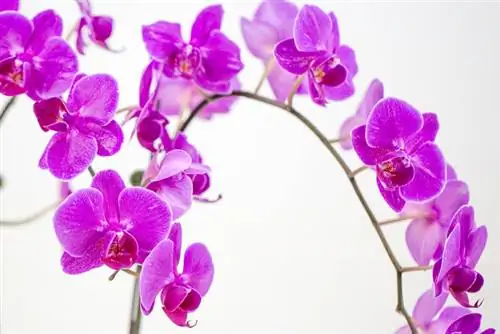
Why do my orchids' leaves stick?
Sticky leaves on orchids can be caused by stress, waterlogging or aphids. To solve the problem, create optimal conditions in terms of temperature, light and humidity, avoid waterlogging and, if necessary, fight aphids.
Most common cause of sticky leaves: pure stress
If resinous droplets form on the leaves, orchids signal a he alth disorder. This is usually due to stress resulting from excessive temperature fluctuations at the location. Phalaenopsis and Cattleya favor a well-balanced heat scale that should not fluctuate by more than 5 degrees Celsius. If you create the following conditions at the location, the sticky secretion will not occur:
- Temperatures in summer 20 to 28 degrees, in winter 16 to 20 degrees Celsius
- Bright lighting conditions, without blazing sunlight at midday in summer
- High humidity of 60 to 80 percent
With a simple minimum-maximum thermometer (€11.00 on Amazon) you can see exactly whether there are problematic fluctuations of more than 5 degrees Celsius between day and night at the location.
Waterlogging makes orchids sweat
If there is a combination of waterlogging and high humidity, vital perspiration is hindered. In order to maintain the flow of water, orchids in their distress force the moisture through the stomata of the leaves, which can be seen as a sticky secretion. Botanists call this process guttation.
If waterlogging can be diagnosed as the cause of sticky leaves, ideally repot the orchid unless it is in the middle of its flowering period. Otherwise, let the substrate dry thoroughly and water more sparingly from now on.
Aphids cause sticky leaves
If location problems and waterlogging can be ruled out as causes, aphids come into focus as the trigger. The pests pierce the leaves and suck up the plant sap. They excrete the waste materials as a sticky secretion. If you have discovered the tiny lice on the underside of the leaves, then proceed as follows:
- Wipe the leaves with a damp, soft cloth
- Make a solution from 1 liter of water, 1 tablespoon of soft soap and 1 teaspoon of spirit
- Spray the affected orchid at intervals of 2 to 3 days
Isolate the plant while aphids are on it to prevent further spread.
Wipe leaves consistently
The resinous droplets on orchids essentially contain sugar and other nutrients. Please wipe off the sticky secretion regularly with a soft cloth. If aphids have not already caused them, the pests and other pests are magically attracted to them.
Tip
There is no reason to cut off the sticky leaves on orchids. The sticky secretion does not cause disease and is not infectious. In this case, please remain true to the principle that only completely dead parts of the orchid plant may be cut.

